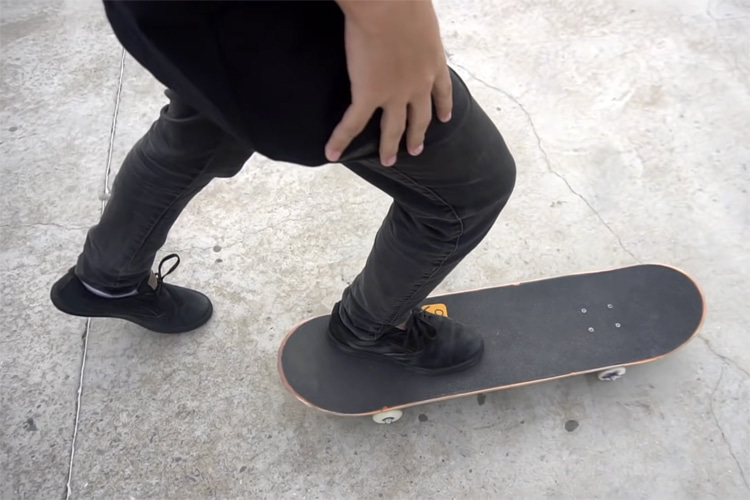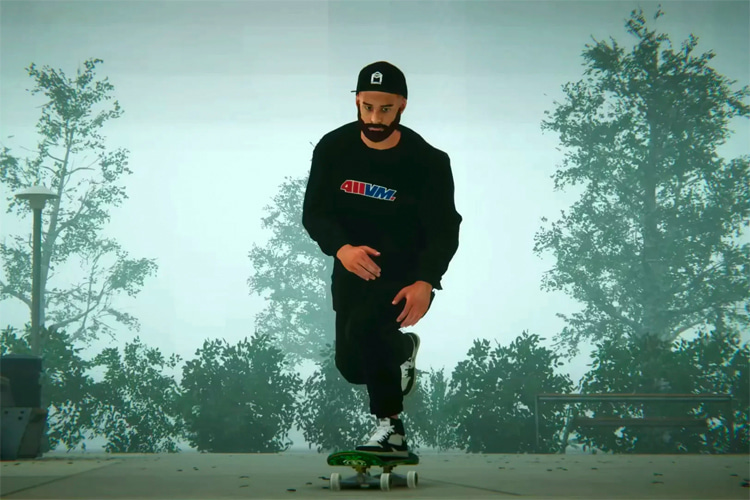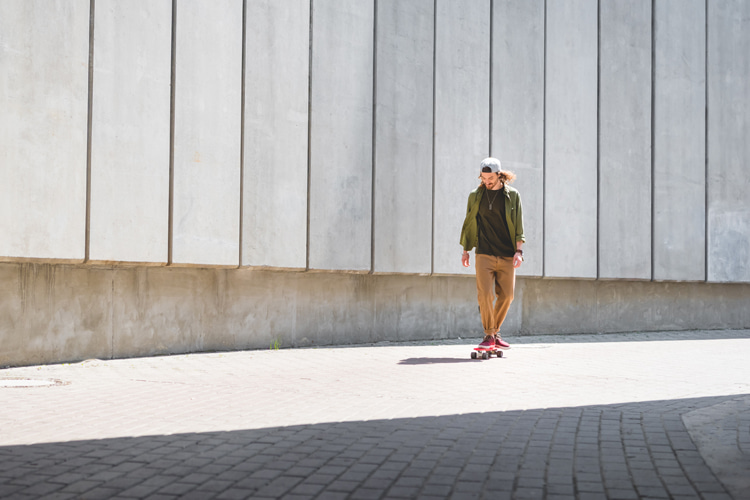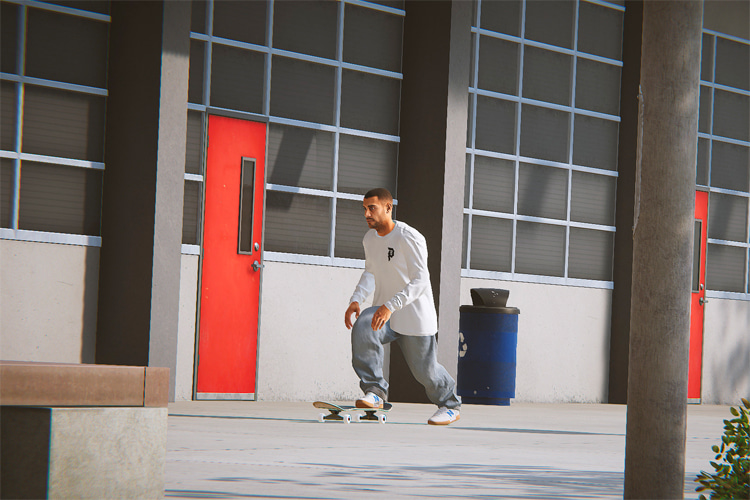Pushing mongo is one of the most controversial techniques in the skateboarding world. Here's what every skater should know about it.
Is the mongo push a good practice or malpractice? Is it a stylish and irreverent technique or a classic beginner's mistake? And if it's OK, why and when should you do it?
One of the first things that skaters learn when they grab a board for the first time is that skateboarding has no rules.
Everyone is free to do whatever makes them feel good and enjoy a good time out on the sidewalk or skatepark.
Actually, at the heart and essence of skateboarding is the invitation to break the rules, guidelines, and pre-established riding styles.
It's all about freedom and interacting with the environment by unleashing our creativity and body expression - a bit like dancing or surfing.
But every sport, outdoor activity, or even art has its inner controversies, dilemmas, and endless debates and disputes.
Pushing mongo is one of skateboarding's oldest unsettled discussions.
To push or not to push mongo? That is the question skateboarders have been asking for decades.
Let's dissect the contention by addressing the original concept. What does push mongo mean?

What is Mongo Pushing?
One of the first techniques a beginner skater needs to master is to push on a skateboard to gain speed and move around.
A good practice is to balance the body on the lead/front foot.
"This can be difficult and a bit frightening for beginners because it puts a skater's weight in a position that makes it difficult to steer the board or react to something going wrong," underlines Per Welinder, author of "Mastering Skateboarding."
"When you're pushing well, your rear/back foot should start ahead of you and the board, and the push should end with the rear leg fully extended out behind the board."
However, some people push their boards with the front foot while keeping the back foot on the deck.
This is commonly known as "pushing mongo."
It applies to regular and goofy-footed skaters - regular footers will push with their left foot, and goofy-footers will push with their right foot.
So, is mongo pushing bad? What's wrong with it?
The technique is often considered silly, lame, uncool, kooky, stupid, and unstylish. Many riders think it looks awkward, dumb, not practical, and unnatural.
Let's take an analytical look at the upsides and downsides of the infamous skateboard technique.

The Cons of Pushing Mongo
One of the reasons why the mongo push is considered a bad habit is because it (apparently) adds nothing to the riding experience.
Is it wrong to push mongo? In theory, it isn't - there is not a right or wrong way to ride a skateboard.
Is it OK to do it? If you feel comfortable with it and it works right for you, it's all good.
So, why and when could it not be a good idea?
"Because it takes more time to set your feet up for a trick after pushing mongo than pushing regular, it's best to learn to push regular if you can," adds Welinder.
For instance, if you're gaining speed and momentum to pull off highly technical flip tricks, you'll need to shuffle your feet around quickly.
In other words, when you put your front foot on the board, you then have to readjust your back foot to get it back onto the tail.
It's much easier to push with your back foot and then right back onto the board's tail.
And if you don't have enough runway before doing an ollie or kickflip, it'll be a lot harder to set up your feet fast.
Pushing mongo also makes it harder to control the board due to the temporary weight distribution imbalance, and the skater will struggle to get as much speed and stability.
Turning the board while pushing regular makes things easier, too, because of where your weight is centered on the board.
Finally, if the nose of the board hits a small object or goes over a crack, there's a greater chance it will turn one way or the other.
Another downside could be that when you're throwing down your skateboard with your front hand, you will not have the front foot on the same side of the body.

Advantages and Famous Adopters
So are there any advantages of learning the mongo push? Yes.
Riders may want to push mongo when riding in a switch stance to avoid pushing the skateboard with the weaker back foot.
Also, the controversial technique could be the go-to skill to land a few tricks faster and easier.
Give it a try on a straight no comply and in a Madonna air.
Confident and accomplished skaters love to defy the rules and don't fear being mocked for pushing mongo.
Do any famous pro skaters push mongo? Yes, most professional skateboarders are skilled enough to push using either foot.
Riders like Eric Koston, Mark Gonzales, Stevie Williams, Jacob Vance, Bill Danforth, Gino Iannucci, Jason Dill, Tom Penny, Andrew Reynolds, and Chris Cole often switch between regular and mongo.
You can also push mongo to rebel against pre-established skate norms or simply to be funny. Who cares? If you like it, keep doing it.
